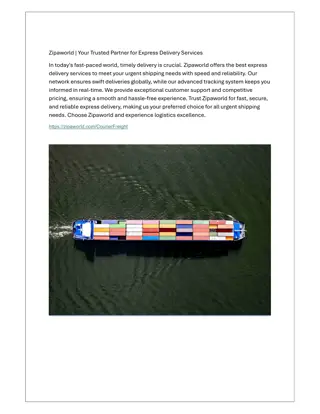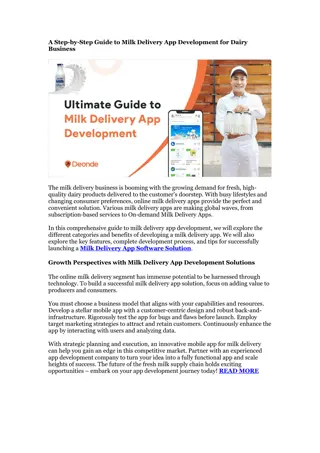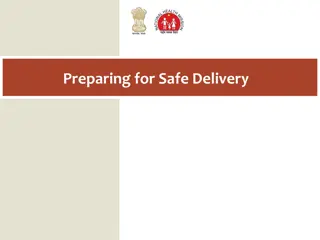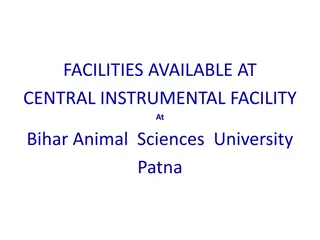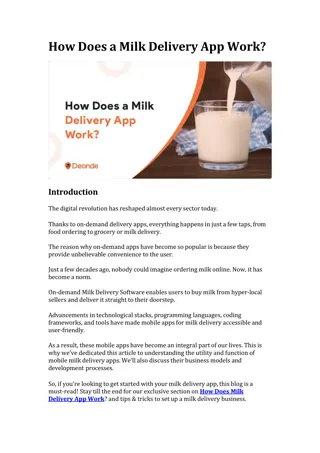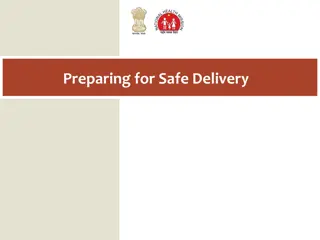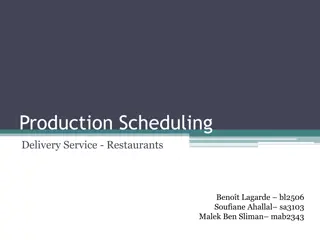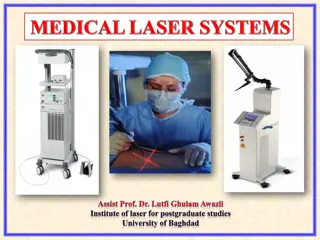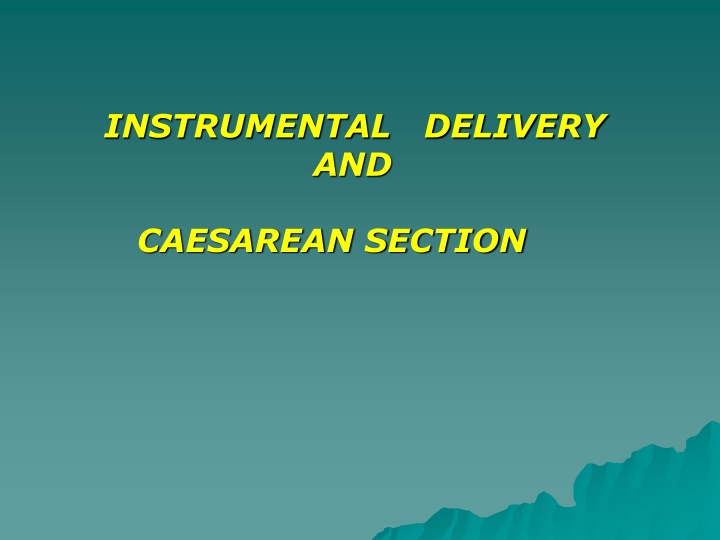
Understanding Instrumental Delivery in Obstetrics
Learn about the indications, criteria, analgesia options, types of forceps used, and key features of instrumental delivery and cesarean section procedures. Discover the potential scenarios where instrumental delivery is needed and the necessary conditions for a successful procedure. Explore the importance of proper analgesia and the various types of forceps available for different situations in obstetrics.
Download Presentation

Please find below an Image/Link to download the presentation.
The content on the website is provided AS IS for your information and personal use only. It may not be sold, licensed, or shared on other websites without obtaining consent from the author. If you encounter any issues during the download, it is possible that the publisher has removed the file from their server.
You are allowed to download the files provided on this website for personal or commercial use, subject to the condition that they are used lawfully. All files are the property of their respective owners.
The content on the website is provided AS IS for your information and personal use only. It may not be sold, licensed, or shared on other websites without obtaining consent from the author.
E N D
Presentation Transcript
INSTRUMENTAL DELIVERY AND CAESAREAN SECTION
INSTRUMENTAL DELIVERY POTENTIAL INDICATIONS 1. Failure to advance in second stage - Failure of maternal effort - Epidural analgesia - Mal-position of fetal head 2. Maternal conditions in which expulsive efforts may be detrimental e.g. cardiac and respiratory disease severe pre-eclampsia 3. Fetal distress in the second stage 4. Prolapse of the cord in the second stage. prolonged
WHAT CRITERIA MUST BE MET A legitimate indication must be present The presentation must be suitable 1. Vertex 2. Face (M-A) 3. Aftercoming head - in? There must be no CPD Moulding of the head must not be excessive The head must be engaged If >1/5 is palpable ? The position of the head must be known The cervix must be fully dilated Analgesia must be adequate The bladder must be empty The uterus must be contracted The operator s experience 1. 2. 3. 4. 5. 6. 7. 8. 9. 10. 11. The same conditions apply to the proper use of the ventouse except?
Analgesia for instrumental delivery Perineal infiltration Alone, suitable for episiotomy and low outlet forceps or the ventouse Pudendal nerve block Useful for mid cavity forceps Epidural anaesthesia Ideal for rotational forceps- BUT General anaesthesia May be needed for rotational forceps
TYPES OF FORCEPS A. 1. Kiellands 2. Simpson s or Neville Barnes 3. Wrigley s B. 1. High Forceps 2. Mid Forceps 3. Low-Outlet forceps C. Non-rotational/ rotational High ,no longer acceptable in modern Obstetrical practice
BASICALLY: Curved blades to fit around the head Fenestrated to facilitate application without compression Makes blade lighter Cephalic curve to encompass the fetal head Handle to apply traction, to exertstrong pull
Some have: Pelvic curve in the handle to allow for the curve of the pelvis to adopt to pelvic curve Straight shank to allow for rotation maneuvers Sliding lock to allow for an asymmetrically aligned head , correct lateral flexion asynclytism Minimal pelvic curve, to minimize maternal injury Short handle, no much pull
TRIAL OF FORCEPS / VENTOUSE Justifiable when it is likely but not entirely certain, that vaginal delivery by forceps/ventouse will be successful. Otherwise patient should be delivered by caesarean section (CS), It should be carried out in theatere , fully prepared for ?.
THE USE OF VENTOUSE Vaginal delivery is feasible even if the cervix not fully dilated. The following points are guide to its use. The patient s expulsive efforts are used to assist delivery. The fetal head must be at least just below the ischial spines The largest possible of the four cups should be used. If delivery is not imminent after pulling on the ventouse during the 3 contractions, 15 minute ,the attempt must cease and the patient should be delivered by C/S
CONTRAINDICATIONS FOR VENTOUSE / FORCEPS Cephalo pelvic disproportion (CPD) Malpresentation face Very immature fetus 4. Big Baby Ventouse Pressure used -0.8 kg / cm2 Traction to fetal head at right angle to line of the curve of the pelvis 1. 2. 3.
Complications Ventouse Forceps Maternal - Cervical damage - Vaginal wall damage - Postpartum haemorrhage (PPH) Fetal - Chignon - Cephalhaematoma - Skull abrasion Maternal - Vaginal wall damage - Perineal tear - Retention of urine -PPH Fetal - Bruising of head - Cephalhaematoma - intracranial bleeding. - Facial nerve palsy / skull fracture
CAESAREAN SECTION Must not be carried out without good reason. Indicated for fetal / maternal reasons when delivery must be effected rapidly and when vaginal delivery is not possible.
TYPES : Delivery of fetus through abdominal route. Lower segment caesarean section (LSCS) Classical C/S TIMING Emergency Elective Incisions on abdominal wall pfannensteil - midline sub umbilicus Indications: Few are absolute Majority are relative
Elective Maternal Placenta praevia Tumours in the pelvis Previous 2 or more caesarean section (CS) Previous classical CS Fetal , Breech, Twins, Transverse
EMERGENCY Failure of progress first stage of labour Fetal distress first stage /2nd stage of labour Intrapartum haemorrhage severe cases of abruptio placenta Transverse lie in labour Prolapse cord in first stage Mal presentation - Mentoposterior
COMPLICATIONS: 1. Anaesthetic complication pulmonary aspiration. 2. Complication related to the procedure 1. Injury to other organs 2. Haemorrhage 3. Thrombosis pulmonary embolism 4. - deep vein thrombosis 5. Paralytic ileus/ burst abdomen 6. Sepsis 7. Wound haematoma
Delivery in subsequent pregnancy Cephalic Breech Transverse Rupture uterus Reason for the primary Cs
Anaesthesia & Caesarean Section General Maternal Death * Mendelson s Syndrome * Amniotic fluid * Haemorrhage






